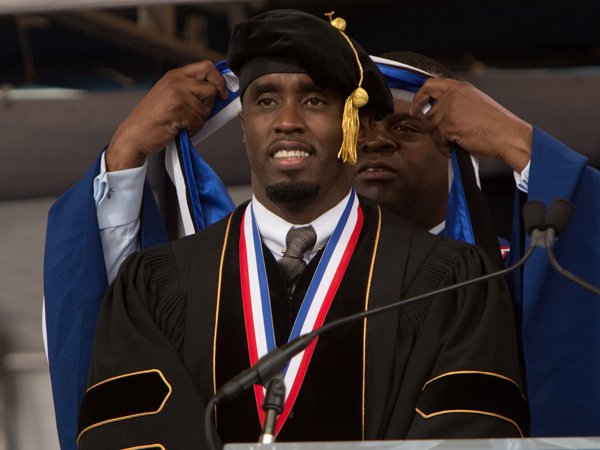The Architect
Larry Smith is absolutely, positively, Hip-Hop’s very first super-producer. He is a trailblazer who understood things sonically, that many modern producers still don’t quite understand. He produced Hip-Hop’s first three platinum acts – Whodini, The Fat Boys, and RunDMC. Larry Smith was the man. For those of you who have no clue who Larry is, and why he is one of the funkiest men who ever lived, I am about to put you up on game.
First and foremost, Larry Smith is a musician. He did not learn how to produce via programming on a sampling drum machine and sampling old records. Larry Smith could play multiple instruments with his favorite being the guitar.
Larry Smith was born and raised in Queens. The first band that he played in was called the Jamaica Kats. The second band
was called the Fire Bolts. Larry had a high school friend named Danny Simmons. His brother Russell managed a funk band called
Orange Krush and a rapper named Kurtis Blow.
Russell Simmons successfully got Kurtis Blow signed to Mercury Records. Larry Smith co-produced and played bass on THE BREAKS and Christmas Rappin. Kurtis Blow’s debut album went gold. Larry never looked back.
Russell Simmons was developing his brother Run’s group Run-DMC in ’82. Larry Smith
produced demo tapes on the group. He produced It’s Like That and Sucker MCs which got the
group signed to Profile Records. The production on those two records is groundbreaking. Larry
Smith’s reliance on a drum machine to create a drum program that would lead the record with
minimal overlapping instrumentation reset the wheel for hip hop production. It’s Like That was
harder and more abrupt than any other record of the day. Run-DMC’s first self-titled album went
platinum.
Larry Put Me Inside The Cadillac! -Run
Larry Smith hung out in a club in the Bronx called Disco Fever. One weekend Russell
Simmons introduced him to Rapper Jalil of the group Whodini. Whodini had already scored a
platinum self-titled album. It was produced by Thomas Dolby. At that time, Jive was an
independent European label. Hip-Hop was new. Thomas Dolby was not a HIP-HOP producer
which allowed him to provide a polished sound for Whodini. They were the biggest act in hip
hop. Jalil decided to give Larry a shot. What a shot it was.

Larry knew that he could top the polish of Thomas Dolby. He used drum machines,
synthesizers, and played guitar seamlessly to create some of thee most futuristic hip hop sounds
of the day. The beats to Five minutes of Funk, Freaks come out and Night, Funky Beat, Friends
or One Love stand as some of the slickest Hip-Hop beats ever recorded. Whodini scored another
platinum album with Escape. Larry was thee man.
The fourth biggest act of that day was The Fat Boys. The Fat Boys aka the Disco 3 were
beast from East New York Brooklyn. Kurtis Blow loved them and was down to produce them. To
make sure the project was a masterpiece he enlisted Larry Smith to co-produce. Larry produced
and played bass on Jailhouse Rap. Larry Smith was now hip hop’s first super producer.
The very first Hip-Hop video show was Video Music Box. The show was created and
produced by Ralph McDaniels. Uncle Ralph was a college student at LaGuardia interning at
WNYC-TV in 1983 when he created Video Music Box. The show’s theme music was the
instrumental of Whodini’s Five Minutes of Funk which was produced by Larry Smith.
Taking It To The Next Level!
Larry Smith’s genius lay twofold. The first part of his genius was his ability to tailor
sounds according to the given artist vocal tone and inflection. He knew what sounds and
instrumentation fit said artist’s ebb and flow. He didn’t simply make a beat and allow an artist
who liked it to jump up and spit to it. He tailored and crafted it according to his sonic vision for
the individual artist or group. He was Timbaland long before Timbaland. The second aspect in which he was genius was his understanding of using live instrumentation on top of drum machine 808’s to capture a more refined sound. When a producer
loops and samples a record, he is often taking multiple layers of the original record and simply
adding his own sharp drum to it.
Remember, those 70’s funk records were recorded by funk bands. There may have been 10 musicians involved in a recording. When sampling the record, the producer is sampling a sound of 10 musicians but he uses his drum program and sharpens the
bass to give the melody snap. This sounds great for Hip-Hop. However, by playing live instrumentation Larry eliminated a lot of musical clutter and created a richer sound with more clarity. His music sounded digitally long before digital. Years later, Dr Dre started using session musicians to replay the sounds he wanted to sample. We consider him one of the greatest
producers of all-time. Wyclef Jean adopted this technique. He became a super-producer. The Score by the Fugees is one of the biggest Hip-Hop albums ever recorded. Lil Jon enjoyed this same style of production. We consider him one of the greatest producers in the South. Larry was the inventor.
Unsung Hero : Larry Smith The Architect
Larry Smith died a forgotten hero because he is not from the era of producers becoming mega-stars and artist in their own right. Larry did not journey from producer to record company executive. He didn’t make 100 million; thus, his wealth from record sales makes him more important than the artist who performed his hits. Whether he is unsung or not. He is a hero in the genre called Hip-Hop. I encourage all aspiring Hip-Hop producers to study all styles in an attempt to have the broadest musical range. The goal is to be a master who can craft hits for all artist. Such a feat requires diversity. A master is a wizard and an apprentice at the same time. School starts with
studying Larry Smith.
















